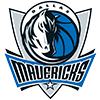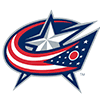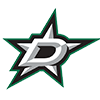Last week, I reviewed how we need to be more critical in looking at pitchers' K/BB numbers because what was a great ratio five years ago is not so special this season. In 2013, there's something else going on with pitching that needs to be considered for the final two months of the season if you are looking for any kind of advantage over your competition.
Earlier this year, Matt Klaassen of Fangraphs did a study to show the year-to-year correlations of different statistical measures for pitchers. In it, he found that groundball rates as well as flyball rates were incredibly consistent from year to year more so than any other component. Meanwhile, line drive rates are incredibly variable and the second worst metric for year to year consistency.
From 2003 to 2012, the batting average on each type of batted ball in play was was rather stable. The table below shows the mean batting average as well as the median batting average for each batted ball type:
| TYPE | MEAN | MEDIAN |
| Groundballs | 0.238 | 0.237 |
| Line Drives | 0.73 | 0.733 |
| Flyballs | 0.221 | 0.222 |
There was very little variance with those statistics over the previous 10 seasons. The range for batting average on groundballs was just 11 points (.234-.245), 21 points on line drives (.739-.718), and 19 points for flyballs (.210-.229). That is not the case in 2013.
Heading into play Sunday, the league was once again hitting .238 on groundballs, but that is where the consistency ends. This season, batters have hit
Last week, I reviewed how we need to be more critical in looking at pitchers' K/BB numbers because what was a great ratio five years ago is not so special this season. In 2013, there's something else going on with pitching that needs to be considered for the final two months of the season if you are looking for any kind of advantage over your competition.
Earlier this year, Matt Klaassen of Fangraphs did a study to show the year-to-year correlations of different statistical measures for pitchers. In it, he found that groundball rates as well as flyball rates were incredibly consistent from year to year more so than any other component. Meanwhile, line drive rates are incredibly variable and the second worst metric for year to year consistency.
From 2003 to 2012, the batting average on each type of batted ball in play was was rather stable. The table below shows the mean batting average as well as the median batting average for each batted ball type:
| TYPE | MEAN | MEDIAN |
| Groundballs | 0.238 | 0.237 |
| Line Drives | 0.73 | 0.733 |
| Flyballs | 0.221 | 0.222 |
There was very little variance with those statistics over the previous 10 seasons. The range for batting average on groundballs was just 11 points (.234-.245), 21 points on line drives (.739-.718), and 19 points for flyballs (.210-.229). That is not the case in 2013.
Heading into play Sunday, the league was once again hitting .238 on groundballs, but that is where the consistency ends. This season, batters have hit just .190 on flyballs, which represents a 33-point difference from last season and a 31-point difference from the previous 10-year average. Even more surprising, batters have hit "just" .681 off line drives this season. That figure is 38 points below last season's figure but is 49 points below the previous 10-year average.
One potential reason for that is an increased utilization of defensive shifts. Most people think of defensive shifts as only happening on the infield, and envision something similar to what Boston used over the weekend with Luke Scott at the plate:

In fact, teams align both their infielders and their outfielders, depending on the batter at the plate. Shifts have always been a part of baseball, but they became more en vogue when Joe Maddon and the Rays made them a huge part of the surprise 2008 season. The shift has grown in popularity by season, and has been particularly popular these past two seasons.
According to Baseball Info Solutions, 2,465 shifts were employed across the league in 2010. that number dipped by just over 100 the following season to 2,358. Last season, the number skyrocketed to 4,577 and that number has already been reached this season as the league is on pace to employ 7,586 shifts. Last season, only line drives were slightly affected by the increased implementations of the shift but this season, both line drives and flyballs have been affected.
The fact that groundball batting averages have stayed relatively consistent throughout the years shows the shift has little impact on those types of batted balls. It does have an impact on well-hit balls scored as line drives on the infield because the shift puts an extra fielder in an area the traditional fielders rarely get to. In the outfield, shifting defenders to a spot to protect a line or a gap helps convert some certain extra-base hits into outs. If teams are going to use defensive data to better position their players, perhaps flyball pitchers can further benefit as they are this season.
In reviewing the current leaderboards, the gains are not realized. The table below shows the average ERAs as well as the average batting average for different groups of flyball rates:
| Group | Average ERA | Average Batting Average |
| Flyball rates >= 40% | 3.77 | 0.233 |
| Flyball rates 30%-40% | 3.67 | 0.246 |
| Flyball rates <30% | 3.88 | 0.253 |
The gains in batting average are likely being lost in ERA due to home run issues that come with throwing that many flyballs. It is not as easy as simply looking for pitchers with low home run to flyball ratios as that particular metric has the worst year-to-year correlation of any pitching metric out there.
If you are in a close race and are looking to play the margins in WHIP and ERA, this could potentially help a few points but you are definitely running out of time to close the gap.

























